g
Are you growing a garden this year? We started ours a few weeks later than we usually do, but by June, everything was growing in full swing. However, a new pest entered our yard this year: a beautiful doe who loves to eat our green bean and soybean plants.
Don’t get me wrong — she’s a very pretty deer. She regularly comes to the pond behind our house to drink, and it didn’t take long for her to explore further and find all some delicious things growing in our garden. While we enjoy seeing her, we have not been enjoying what she’s doing to our plants:

She’s been nibbling every bean plant leaf in sight! In early June, I tried hanging foil pans on strings from my bean poles. The blowing, banging pans do seem to startle and keep her out of the garden — when there’s a breeze. When the air is still, there’s not much else to deter her from coming in and having a snack.
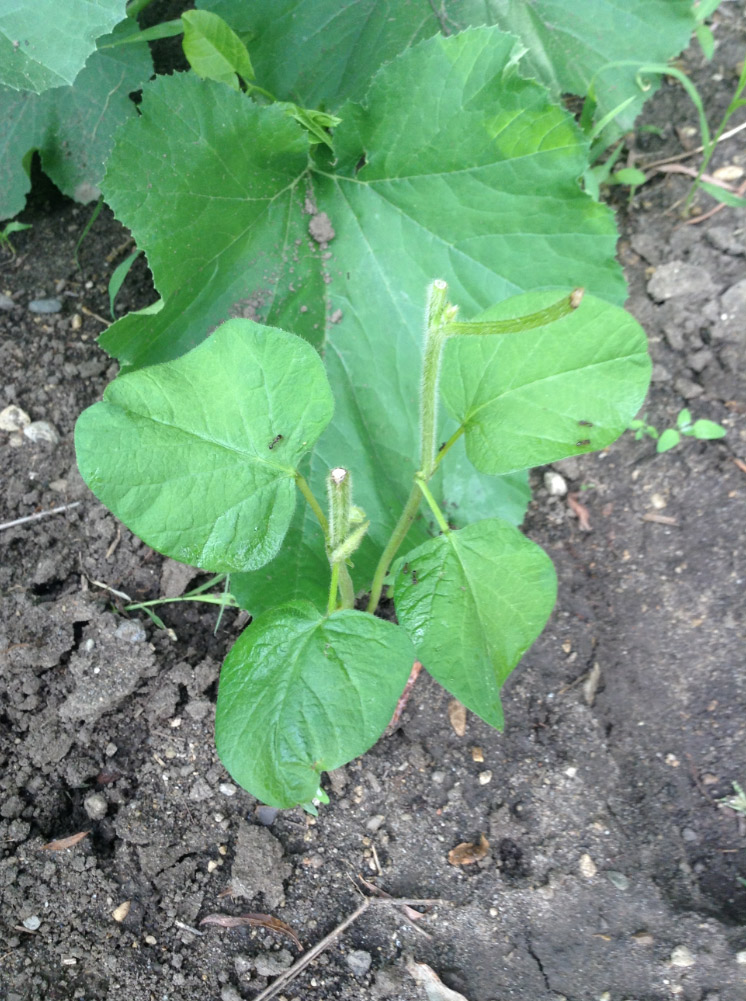
She leaves all of the other vegetables alone — she doesn’t touch our corn, peas, squash, cucumbers. She jumps over the rabbit wire surrounding our garden and goes right for the soybeans and green beans.
I began Googling deer deterrents and found many recommendations to put a sprinkler with a motion detector on it in the garden. I really didn’t want to leave our hose on all the time though.
My aunt grows a large garden each year, and on a recent visit, I asked her if she was having problems with deer this year too. She said that she had deer eating in her garden until she started using a homemade deer repellent this summer — then, they stopped!
“It really works, and it’s cheap to make,” she said.
This sounded like music to my ears. I went home and made a batch of Stinky Deer Repellent Spray. (You can too — you probably have the ingredients in your kitchen right now!)
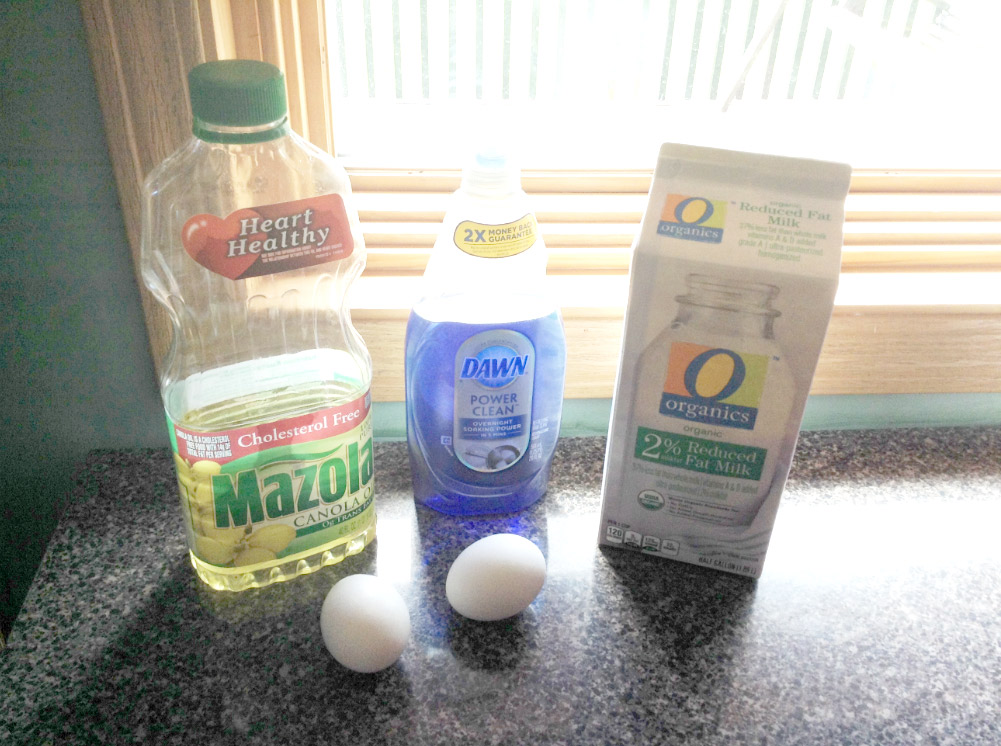
Stinky Deer Repellent Spray
Ingredients:
- 1 tablespoon cooking oil
- 1 tablespoon dish detergent
- 1/2 cup milk
- Two eggs
Put all ingredients in a blender. Blend until mixed. Add to one-gallon container and fill the remainder of the way with water. (There’s one more important step at the end, which I’ll share with you in a bit, but here are some step-by-step photos…)
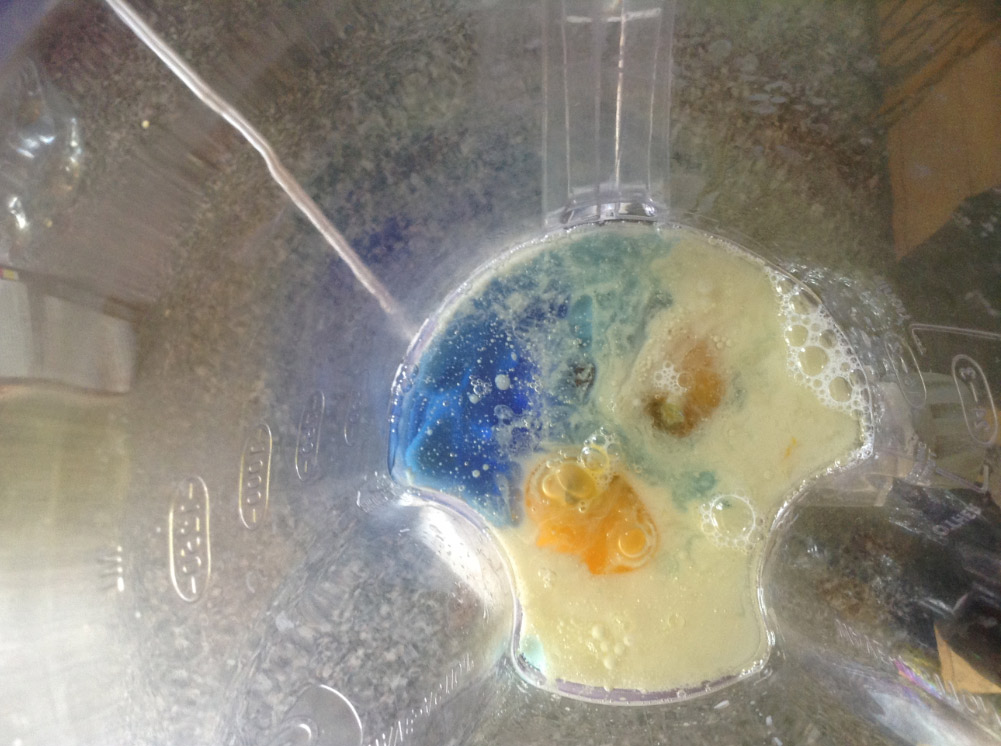
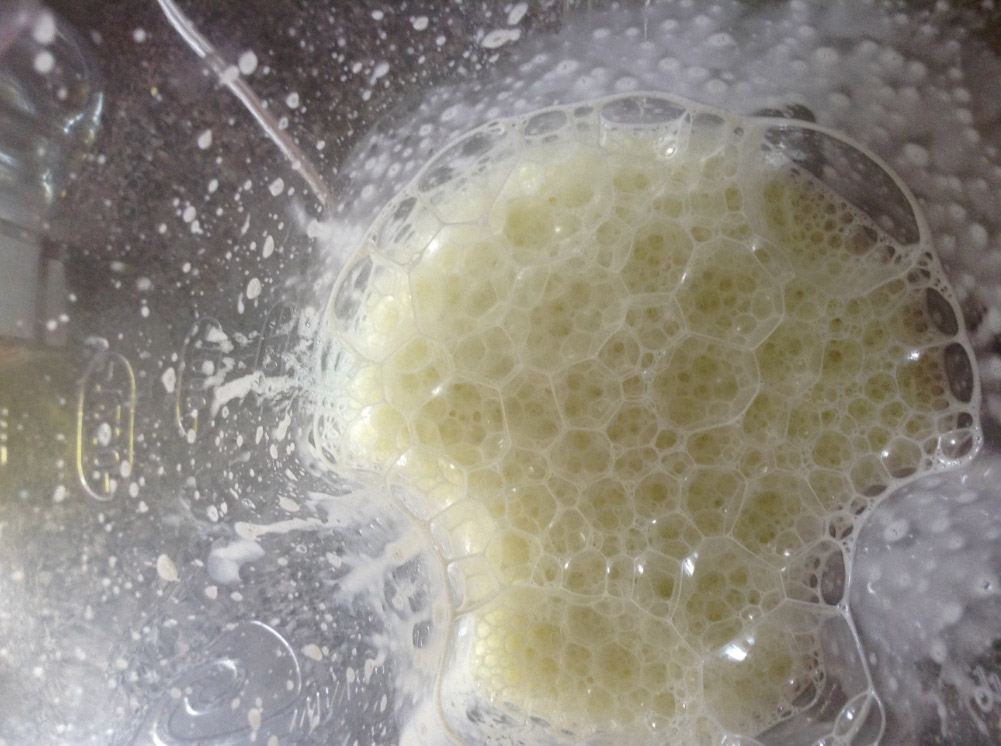
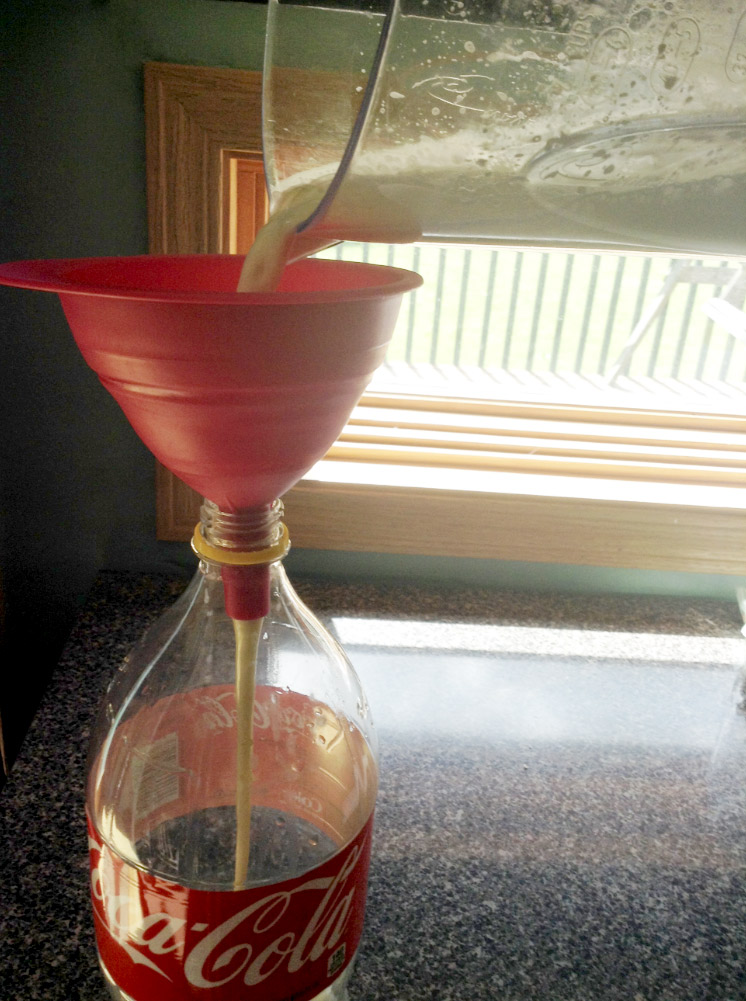
The recipe calls for this mix to be added to a one-gallon jug, but we didn’t have one on hand at the moment. A 2-liter bottle is slightly over a half-gallon, so I used two empty Coke bottles instead. (Surprise, surprise… I just happened to have those!)
I poured half the mixture into each bottle, then topped it off with water. (Go slowly – the egg/milk mixture is very foamy and will want to foam right out of the top.)
Now, according to my aunt, this is the most important part of the recipe: Cap the bottle and set it out in your garden for days.

Put the bottle (or in my case, bottles) in the sun and let them bake — my aunt said, “the longer, the better.” Just think about what’s happening inside that bottle — unrefrigerated eggs and milk together? YUCK!
Once a few days have passed, you can put the mixture in a squirt bottle (like an old dish detergent bottle – it’s a little too thick to work in a trigger spray bottle) and spray it on the plants your deer seem to be eating the most of. Repeat any time you water the garden or after it rains.
Knowing this substance was going to stink to high heaven even before I made it, I decided I didn’t want to bother pouring it from one bottle into another to spray it. I took some extra bottle caps and drilled holes in them:
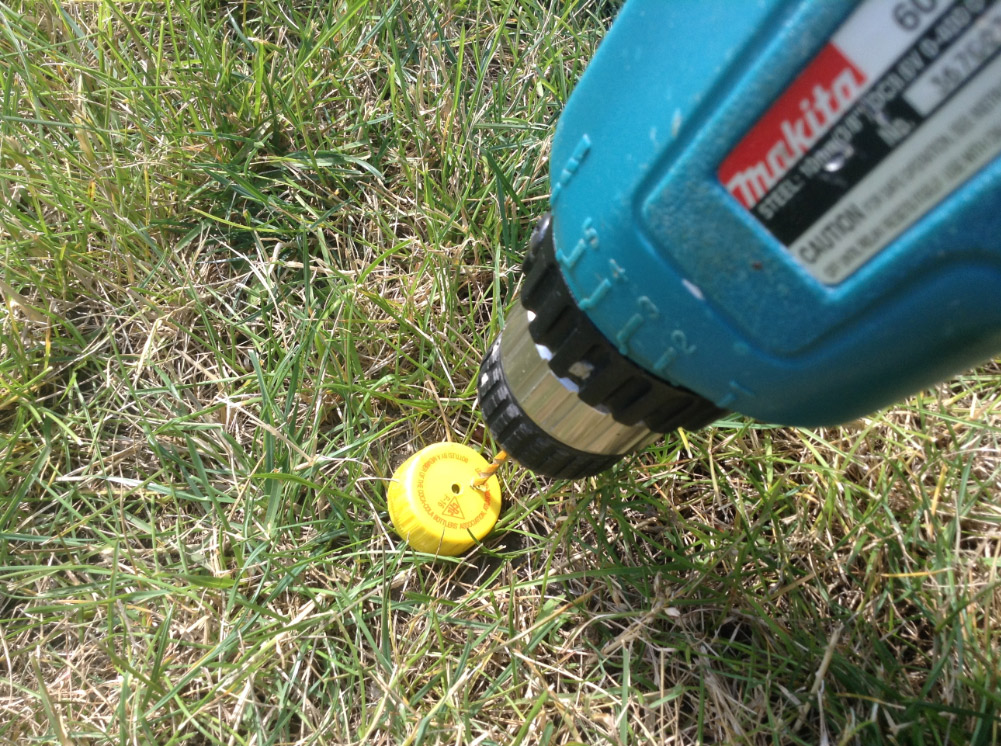
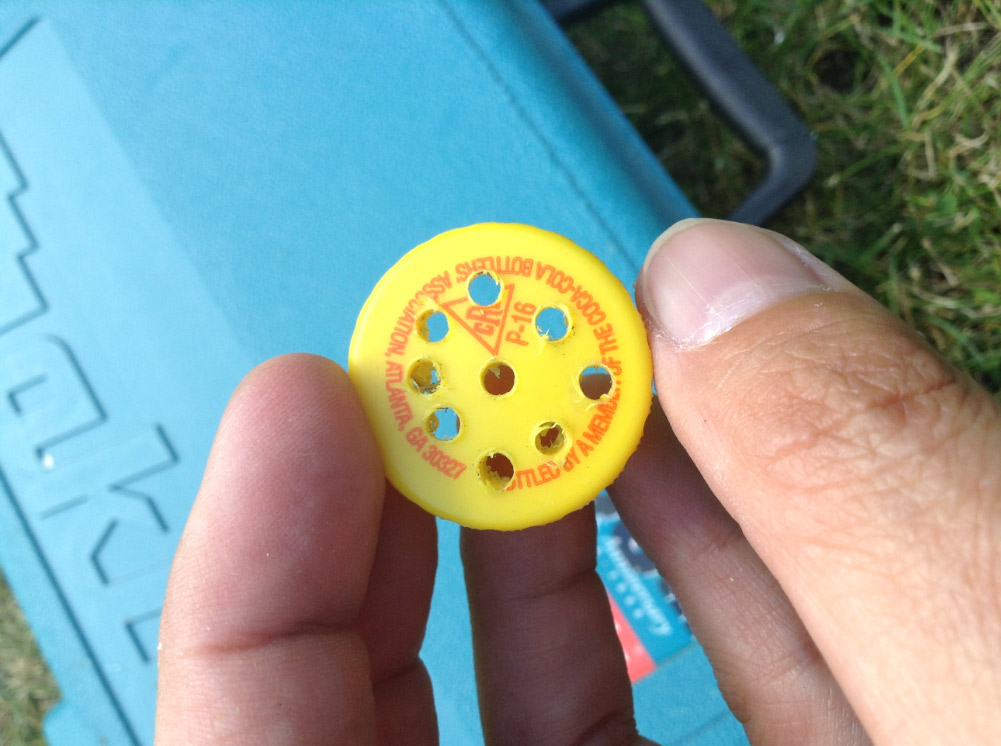
Now, when I want to use the Stinky Deer Spray, I just swap the caps from my bottles, then squirt it right out of the Coke bottle. You could do the same with some extra milk bottle caps.
Now, the big question: Does it work? YES. Incredibly, it does. I started using this a few days after I made it, and my former soybean and bean stems began to grow new leaves that remain untouched to this day:
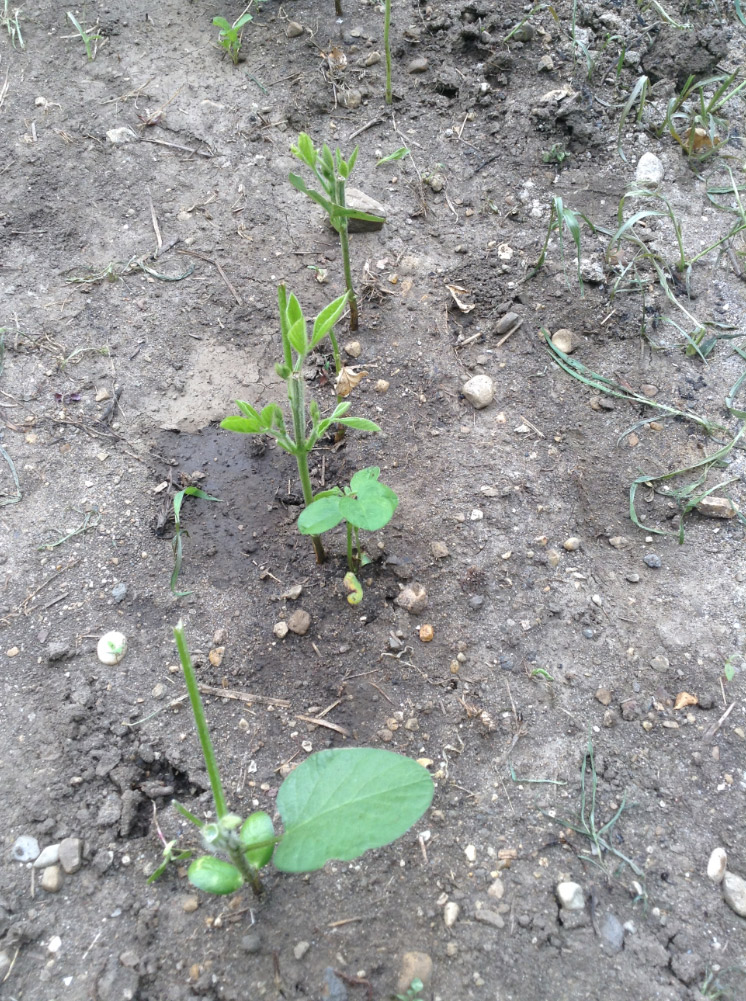
Incredibly, this spray has kept the deer away ever since. I have seen “our” doe by our pond, but she hasn’t come into the garden again! I also have a batch of Stinky Deer Spray “cooking” in the garden at all times so that I don’t run out. I leave my drilled Coke caps in the corner of the garden next to the bottles, so it’s convenient to swap the caps and start spraying again after a rain. It doesn’t seem to hurt the plants at all.
By the way, it smells terrible. You don’t want to spray your plants and then decide to weed the garden. Get all your garden maintenance done, and use this stuff last. (And, hold your head as far away from the bottle cap as you can when you open it. My current batch of spray has been sitting in the garden for two weeks now!)
Why does it work?
There are several versions of this recipe floating around the web (some add cayenne pepper or garlic too) and the reason it works is that deer sniff first, eat second. If it doesn’t smell good to them, they won’t eat it… and trust me, this does not smell good. The dish soap and oil helps the mixture stick to the plants’ leaves.
I will likely cut back on using it as we get closer to harvest time, and again, I’m only spraying our beans and not everything else in the garden — but it is working. How about that?










mumsypoo says
I wonder if it would protect our hostas that the deer love to chomp to the bit.
Coupon Maven says
I imagine it couldn’t hurt… it is cheap to make, so it’s worth a try!
dancingwolves says
My husband won’t put a fence in our yard (we are not rural so it wouldn’t look strange) because he’s afraid I might get a swimming pool. So when I started planting several years ago certain plants, the rabbits started in on them. I didn’t want to put “barb” wire fencing like we did at another place so found this product that you sprayed that was described as “putrified eggs”. I did spray it by the plants that were just under the dining room window so you can only imagine the god awful smell when the west winds blew in. I imagine that’s what you are in essence cooking up and there is no exaggeration when you say it smells bad….it’s gag material. But it works!
Coupon Maven says
I’d never heard of “putrified eggs” before, so I googled it:
https://naturesmace.com/deer-repellents-that-work/
This site has some info on why it works (again – that smell!) — very interesting, and yes, I bet what’s cooking in the bottles in my garden is basically some form of this. Yucky… but effective!
I will say that after a few days I do not notice the smell anymore, but apparently the deer do.
J.R. says
Got any venison recipes :)
Coupon Maven says
Haha… yes, you’re not the first to point out that there’s another way to take care of our problematic deer.. ;)
dancingwolves says
Its Putrefied egg mimicing a smell that gives the impression a predator is in the vicinity. It also mimics the smell of urine from a predator. There are blood and urine based products but apparently the egg based ones work the best. Deer have a more superior sense of smell than humans (that’s a blessing).
sonny miller says
we have a all natural deer repellent that smells like mint and works
hammars says
We ended up putting a 7′ fence around our garden, too many deer here. Just the thin black plastic kind. To keep the deer from eating my impatiens in my bed near the woods, I just sprinkle cayenne pepper on them. I buy the big jar at Sam’s.
Works like a charm. Just remember to reapply after rain.
SSMark1 says
Many years in our area, we usually start drying out in summer about July.
Gardens that are watered have very green plants become very attractive to deer & other critters.
We’ve used this potion as well as coyote urine products, moth balls, hot sauce, and other things…
When there has been a bad drought in past years, the animals get more aggressive & will eat the rest of the green stuff, not just beans & soy… and it’s not just the deer that will try harder to get at the green plants, when the grass dries out, a lot of other will as well.
If you live in a more rural area, and you can build a 7′ to 8′ fence, that’s the way to go.
We have a rural garden in Wisconsin, and some times it’s not tended to for 2-3 weeks.
So a fence is required, especially since it’s watered everyday and washes all that good smelling stuff away…
It’s amazing how plants can get so BIG, in so little time with the proper soil, fertilizer, water, and sunlight.
We’ve even grown tobacco and cotton in years past, tobacco gets HUGE & attracts hummingbirds!
We didn’t get any cotton blooms though. Too far north I think for the plants to make it that long.
-Mark